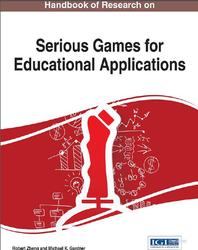This book is written for teachers of all backgrounds. Our aim is to discuss a wide range of teaching problems—from classroom techniques to school organisation—in order to help practising teachers in their daily tasks. We have adopted an eclectic approach, recognising that the teaching of English must be principled without being dogmatic, and systematic without being inflexible. We have tried to show how the underlying principles of successful foreign language teaching can provide teachers in a wide range of EFL situations with a basic level of competence which can be a springboard for their subsequent professional development. We gratefully record our debt to colleagues and students past and present at the London University Institute of Education, whose experience and thinking have helped shape our own. Particularly, we would like to thank our colleague John Norrish for compiling the bibliography.

Why do we teach English?
Socio-linguistic research in the past few years has made educators more conscious of language functions and therefore has clarified one level of language teaching goals with greater precision. The recognition that many students of English need the language for specific instrumental purposes has led to the teaching of ESP — English for Special or Specific Purposes. Hence the proliferation of courses and materials designed to teach English for science, medicine, agriculture, engineering, tourism and the like. But the frustration of a French architect who, having learnt the English of architecture before attending a professional international seminar in London, found that he could not invite his American neighbour to have a drink, is significant. Specialised English is best learnt as a second layer built upon a firm general English foundation.
Indeed, the more specialised the learning of English becomes — one organisation recently arranged an English course for seven Thai artificial inseminators — the more it resembles training and the less it is part of the educational process. It may be appropriate, therefore, to conclude this chapter with a consideration of the learning of English as a foreign/second language within the educational dimension.
Contents.
Preface.
1 English in the World Today.
2 In the Classroom.
3 Language and Communication.
4 Basic Principles.
5 Pronunciation.
6 Listening and Speaking.
7 Reading.
8 Writing.
9 Errors, Correction and Remedial Work.
10 Assessment and Examinations.
11 Young Children Learning English.
12 Learning English in the Secondary School.
13 Teaching English to Adults.
14 The English Department.
Appendix 1.
Appendix 2.
Glossary of Selected Terms.
Bibliography.
Useful Periodicals.
Index.
Бесплатно скачать электронную книгу в удобном формате, смотреть и читать:
Скачать книгу Teaching English as a Foreign Language, Broughton G., Brumfit C., Flavell R., 1980 - fileskachat.com, быстрое и бесплатное скачивание.
Скачать pdf
Ниже можно купить эту книгу, если она есть в продаже, и похожие книги по лучшей цене со скидкой с доставкой по всей России.Купить книги
Скачать - pdf - Яндекс.Диск.
Дата публикации:
Теги: учебник по английскому языку :: английский язык :: Broughton :: Brumfit :: Flavell
Смотрите также учебники, книги и учебные материалы:
Следующие учебники и книги:
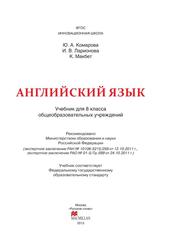 Английский язык, учебник для 8 класса общеобразовательных учреждений, Комарова Ю.А., 2013 — Учебник Английский язык для учащихся 8 класса входит в комплект учебников по английскому языку для средней школы. Он соответствует Федеральному … Книги по английскому языку
Английский язык, учебник для 8 класса общеобразовательных учреждений, Комарова Ю.А., 2013 — Учебник Английский язык для учащихся 8 класса входит в комплект учебников по английскому языку для средней школы. Он соответствует Федеральному … Книги по английскому языку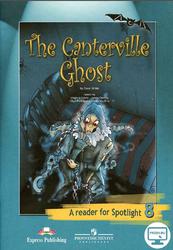 Кентервильское привидение, Книга для чтения, 8 класс, Уайльд О., 2017 — Книга для чтения Кентервильское привидение является составной частью учебно-методического комплекта серии Английский а фокусе для 8 классов общеобразовательных организаций. Книга … Книги по английскому языку
Кентервильское привидение, Книга для чтения, 8 класс, Уайльд О., 2017 — Книга для чтения Кентервильское привидение является составной частью учебно-методического комплекта серии Английский а фокусе для 8 классов общеобразовательных организаций. Книга … Книги по английскому языку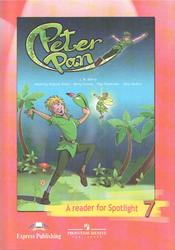 Peter Pan, A reader for Spotlight 7, Barrie J.M. — Peter Pan is a little boy who refuses to grow up, and spends his time having magical adventures. Peter lives … Книги по английскому языку
Peter Pan, A reader for Spotlight 7, Barrie J.M. — Peter Pan is a little boy who refuses to grow up, and spends his time having magical adventures. Peter lives … Книги по английскому языку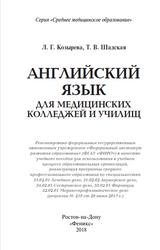 Английский язык для медицинских колледжей и училищ, Козырева Л.Г., Шадская Т.В., 2018 — Учебное пособие подготовлено в соответствии с Государственным образовательным стандартом для средних медицинских учебных заведений. В пособии сосредоточен не только лексический … Книги по английскому языку
Английский язык для медицинских колледжей и училищ, Козырева Л.Г., Шадская Т.В., 2018 — Учебное пособие подготовлено в соответствии с Государственным образовательным стандартом для средних медицинских учебных заведений. В пособии сосредоточен не только лексический … Книги по английскому языку
Предыдущие статьи:
 Destination B1, Vocabulary units with translations, Mann M., Taylore-Knowles S., 2020 — This mini book is prepared for those who want to improve their vocabulary. If this book is useful for you … Книги по английскому языку
Destination B1, Vocabulary units with translations, Mann M., Taylore-Knowles S., 2020 — This mini book is prepared for those who want to improve their vocabulary. If this book is useful for you … Книги по английскому языку English File, Elementary, Tests for Students with Dyslexia — Фрагмент из книги. An Italian teacher talks about his life and his job. Hi, I’m Giorgio Salvatore. I’m 26 years … Книги по английскому языку
English File, Elementary, Tests for Students with Dyslexia — Фрагмент из книги. An Italian teacher talks about his life and his job. Hi, I’m Giorgio Salvatore. I’m 26 years … Книги по английскому языку 55 устных тем по английскому языку для школьников, 5-11 классы, Журина Т.Ю., 2011 — Автор книги Т. Ю. Журина зав. лабораторией Научно-методического центра Юго-Восточного учебного округа г. Москвы, преподаватель английского языка высшей категории. Материалы … Книги по английскому языку
55 устных тем по английскому языку для школьников, 5-11 классы, Журина Т.Ю., 2011 — Автор книги Т. Ю. Журина зав. лабораторией Научно-методического центра Юго-Восточного учебного округа г. Москвы, преподаватель английского языка высшей категории. Материалы … Книги по английскому языку Why We Don t Uke People, Laird D.A., 1933 — First It will be most natural for you to think of other people as you read these pages. You will … Книги по английскому языку
Why We Don t Uke People, Laird D.A., 1933 — First It will be most natural for you to think of other people as you read these pages. You will … Книги по английскому языку

